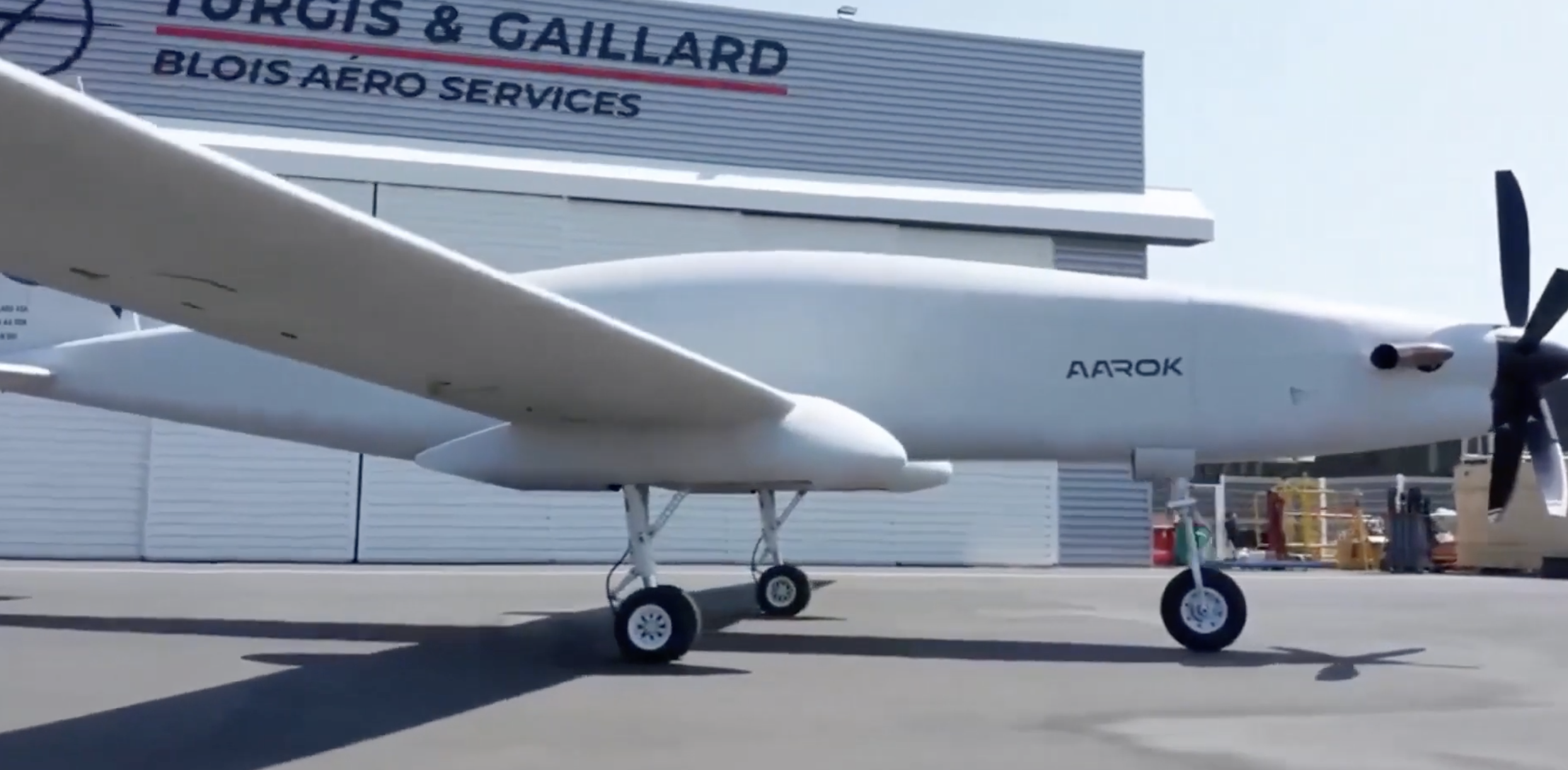By Robbin Laird
Generally, when autonomous systems are discussed in relation to manned systems, the focus is upon teaming. Images of the Australian Loyal Wingman come to mind whereby the autonomous system is seen as a slaved system to a manned aircraft, hence the term teaming.
A key capability of the manned air system is the ability to communicate with and digitally manage the autonomous system.
In my own discussions with NAVAIR concerning the coming of the CH-53K, I focused on such a future for the manned aircraft working with an autonomous system.
In my visit to NAVAIR in January 2020, I discussed this approach with Col Jack Perrin, then the Program Manager, PMA-261 H53 Heavy Lift Helicopters, U.S. Naval Air Systems Command at Pax River Naval Air Station.
As Col Perrin noted in our conversation: “The USMC has done many studies of distributed operations and throughout the analyses it is clear that heavy lift is an essential piece of the ability to do such operations.” And not just any heavy lift – but heavy lift built around a digital architecture. Clearly, the CH-53E being more than 30 years old is not built in such a manner; but the CH-53K is.
What this means. according to Colonel Perrin, is that the CH-53K “can operate and fight on the digital battlefield.”
And because the flight crew are enabled by the digital systems onboard, they can focus on the mission rather than focusing primarily on the mechanics of flying the aircraft.
This will be crucial as the Marines shift to using unmanned systems more broadly than they do now. For example, it is clearly a conceivable future that CH-53Ks would be flying a heavy lift operation with unmanned “mules” accompanying them. The CH-53K in a FARP or Forward Arming and Refueling Point Mission could bring weapons on-board and the unmanned “mules” could bring the fuel bladders along with the main hook, or in the future the three hook system. Such manned-unmanned teaming requires a lot of digital capability and bandwidth to manage, a capability built into the CH-53K.
If one envisages the operational environment in distributed terms, this means that various types of sea bases, ranging from large deck carriers to various types of Maritime Sealift Command ships, along with expeditionary bases, or Formed Arming and Refueling Points (FARPs) or Forward Operating Base (FOBS), will need to be connected into a combined combat force.
To establish expeditionary bases, it is crucial to be able to set them up, operate and to leave such a base rapidly or in an expeditionary manner (sorry for the pun). This will be virtually impossible to do without heavy lift, and vertical heavy lift, specifically.
Put in other terms, the new strategic environment requires new operating concepts; and in those operating concepts, the CH-53K provides significant requisite capabilities, especially when one builds in its ability to direct the operations with autonomous “mules” working with it.
A second way they have been discussed has been in terms of mission threads tasked to an autonomous system or swarm or wolfpack which then is directed to do a mission which then the manned force can exploit in terms of associated operations.
We have seen in the Ukraine war many examples of drones being sent to do a single one-way mission, but this is not only way to think the single-mission focused unmanned system. These one-way drones are conceived of more terms of how missiles are used than in terms of providing a robust partner for ongoing manned platforms.
The notion of mission-thread and the use of maritime autonomous systems is here now and I discussed this approach with the then Director General Warfare Innovation, Royal Australian Navy, Commodore Darron Kavanagh of the Royal Australian Navy in a visit to his office in Canberra in May 2023.
As CDRE Kavanagh underscored: “One of the issues about how we’ve been looking at these systems is that we think in terms of using traditional approaches of capability realization with them.
“We are not creating a defense capability from scratch. These things exist, already, to a degree out in the commercial world, regardless of what defense does. AI built into robotic and autonomous systems are in the real world regardless of what the defence entities think or do.
“And we have shown through various autonomous warrior exercises, that we can already make important contributions to mission threads which combat commanders need to build out now and even more so going forward.”
And that is really the key point in discussing these systems. The use of maritime autonomous systems is driven by evolving concepts of operations and the mission threads within those evolving CONOPS rather than by a platform-centric traditional model of acquisition.
CDRE Kavanagh pointed out that traditional acquisition is primarily focused on platform replacement and has difficulty in supporting evolving concepts of operations.
This is how he put it: “We’re good at replacing platforms. That doesn’t actually require a detailed CONOPS when we are just replacing something. But we now need to examine on a regular basis what other options do we have? How could we do a mission in a different way which would require a different profile completely?”
Autonomous or unmanned systems seen in this way will reach another level when they can swarm to deliver the capability needed for a mission thread. Although this capability can be foreseen it is not here yet, but learning how to use unmanned and autonomous systems to perform a core mission thread is the necessary step towards a swarming future. If you don’t use them, you will not build them into your force anticipating the swarming future.
As Keirin Joyce, an Australian Air Force Officer who also served in the Australian Army, a leading expert on unmanned and autonomous systems put it in a 2020 article:
What does true swarming look like? Imagine UAVs are operating across the sky, providing aerial observation, targeting, data networks, delivery of even smaller UAV and precision navigation and timing services, with ground robots that can be tasked to take action in a wide spectrum from logistics to combat and casualty evacuation.
That robotic swarm is a heterogeneous cross-domain team, consisting of dynamic configurations, sensing capabilities, spatial footprints and behavioural strategies, independent of centralised control, synchronised to work with, and cued by, their human teammates.
Imagining a more expansive vignette of robotic swarming is not too difficult:
It is 2030, and an Australian joint task force (JTF) is deployed on stabilisation operations in the near region against a force of insurgents who have been equipped and trained by a technologically sophisticated, militarised nation-state seeking to gain power at a regional pivot point.
The Australian JTF includes swarming machines in support of an Army brigade. Multiple unmanned assets come and go with trusted permission from the networked combat teams, and they operate in all five domains: on and underwater, on land, in the air, in space, and interacting with the cyber/electromagnetic spectrum.
These assets started their capability life cycle in the 2010s as small tactical unmanned aerial systems (UAS), ground robots, teleoperated armoured vehicles, and armed medium altitude long endurance (MALE) remotely piloted aircraft systems (RPAS). They are now semi- and fully autonomous.
Their configurations are dynamic, changing which assets are leading or following and adapting routes to account for unpredictable weather, changes which are frequent and difficult to predict in the Pacific.
The systems take evasive action from insurgent threats in the kinetic, electromagnetic, and cyber spectrum. The insurgents are well equipped with mobile, radar-cued surface-to-air missiles and counter-UAS systems. At higher altitudes, a Loyal Wingman swarm protects the crewed Wedgetail by changing flight altitudes and /profiles to account for radar threats. Down at ground level, machines in the team sense themselves and their surroundings to adapt to conceal their signatures, and or to exploit the signatures of threat forces.
This adaptation occurs across a wide spectrum of sound, vibration, colour, light, electromagnetic, radar, and particulate sensing.
The machine sensing can algorithmically adjust its behaviour depending on the tactical and operational scenario and mission guidance: passive, reactive, overt, covert, offensive, defensive, or population interactive.
Humans issue the orders and the mission commands, and, as the team rolls through the area of operations, the machines are cued and prioritised by the humans and their robot teammates.
Robots are sacrificed, they use automated/autonomous kinetic engagement to shield their machine and human teammates, and they undertake the dull, dirty, and dangerous roles to enable the humans in the team to do what they do best.
This is science fiction becoming science fact. The advent of true machine swarming behaviour is coming: an armada of machines, evolved algorithms, distributed intelligence, and complex autonomous behaviours – just as in a colony of bees.
However, true swarming is not here yet. In the meantime, we need to dial down the use of the term ‘swarm’ when discussing multiple unmanned aircraft.
But there is a third way in which one can discuss autonomous systems working with manned air systems. One can build combat clusters which work in a combined arms operation. This would particularly refer to manned systems working with a package of autonomous systems to deliver them to a point of operation where they then could do a mission thread, as discussed in what I am referring to as the second modality for autonomous systems operations.
I will discuss this combined arms operation approach in my next article in this series on the way autonomous systems can be used today, and not wait until the ghost fleet arrives or 2040 or whichever comes first.
Featured Graphic credit: Photo 147541472 | Autonomous Systems © Fairoesh N. | Dreamstime.com




